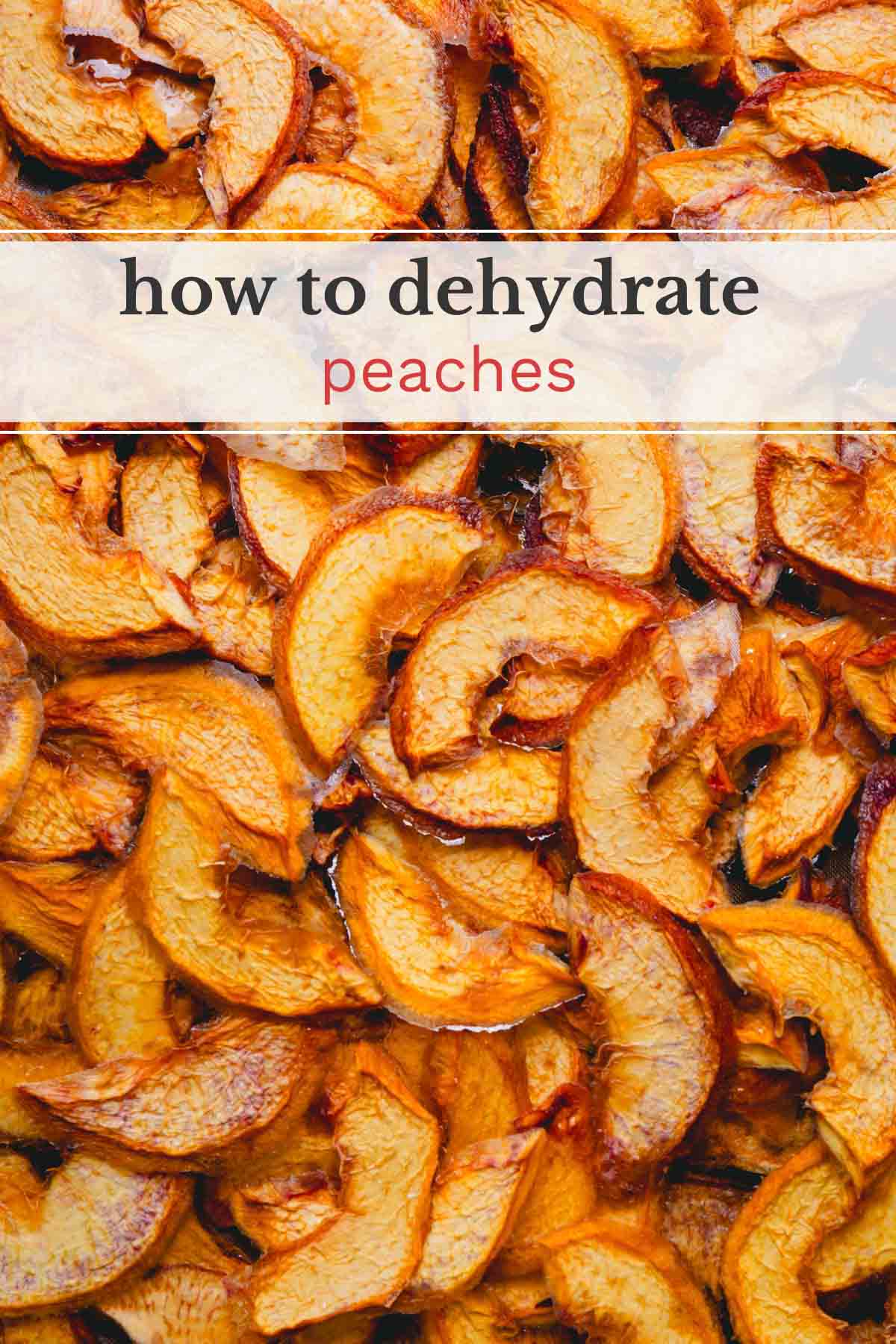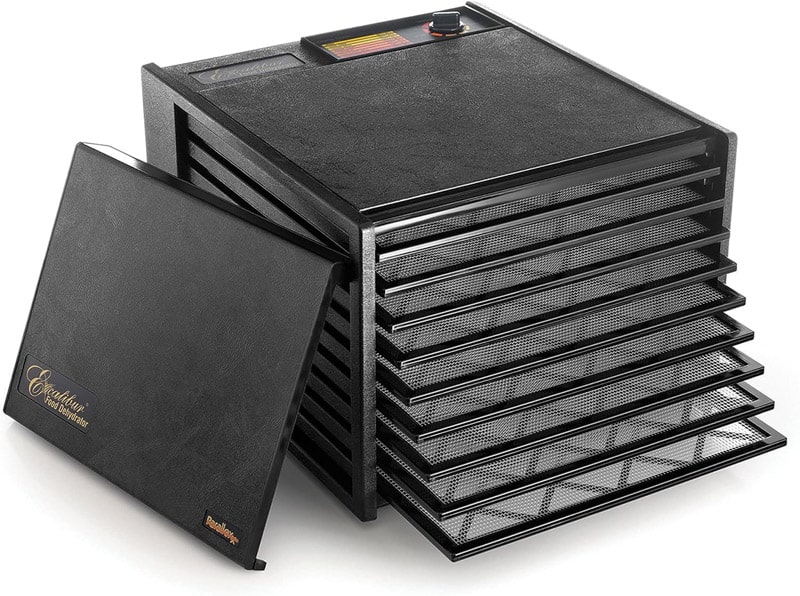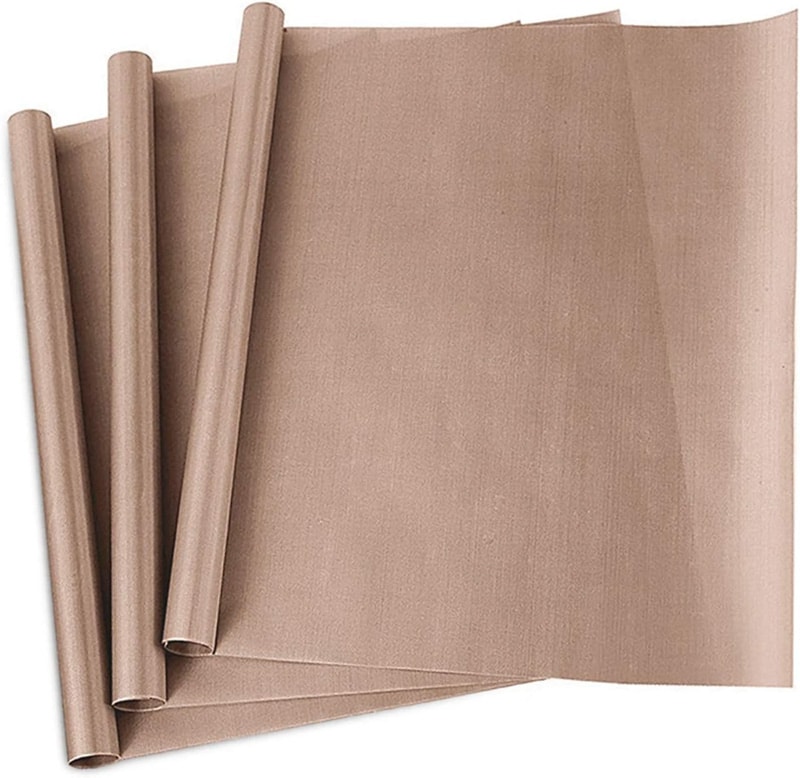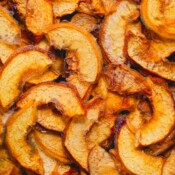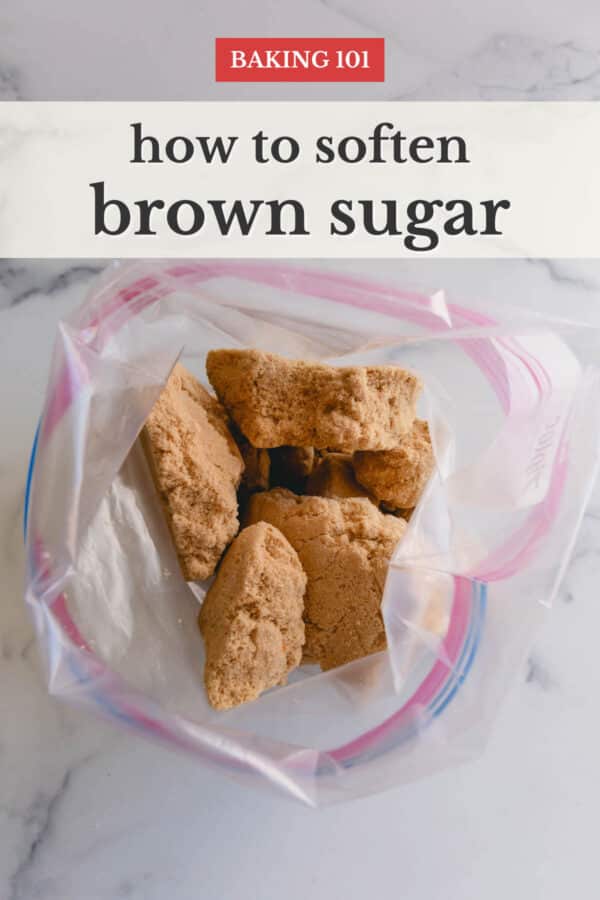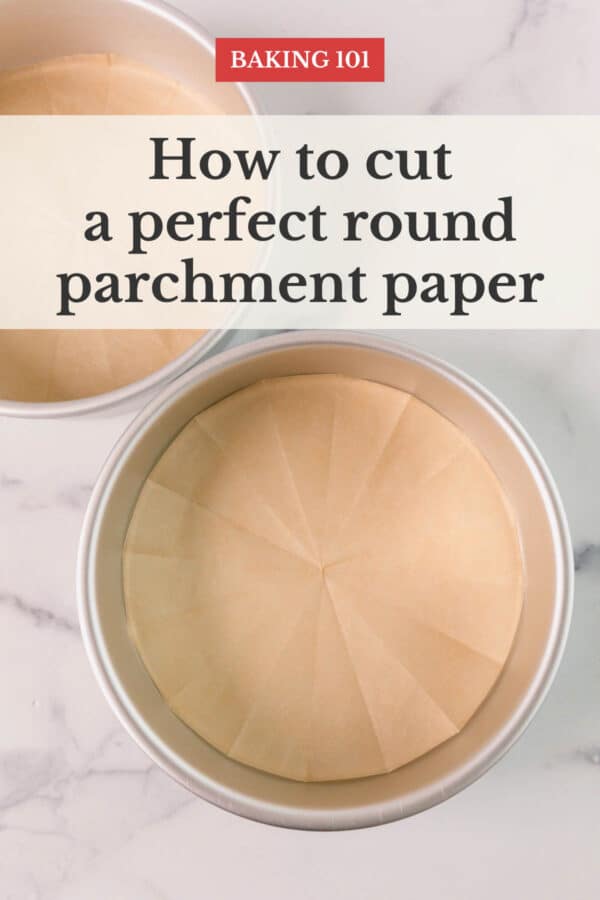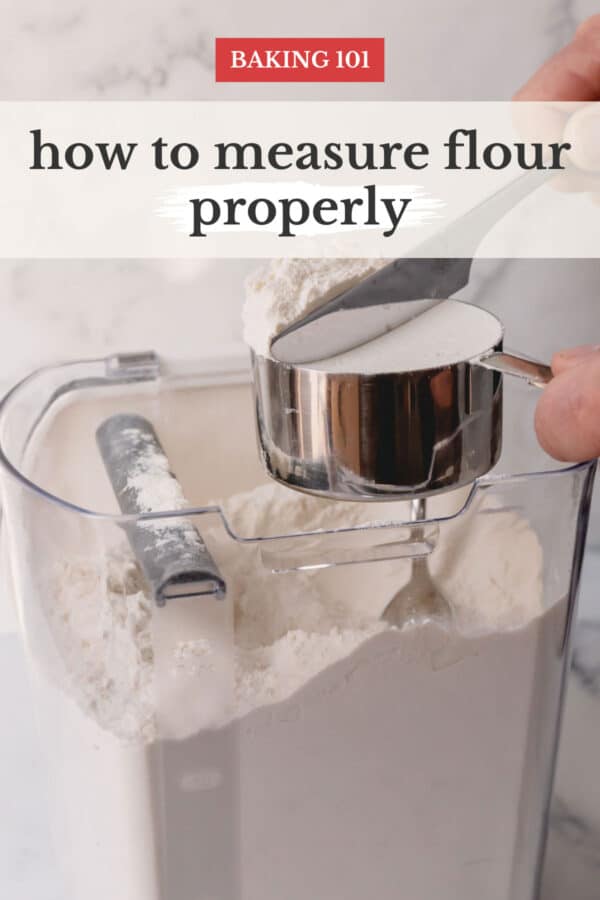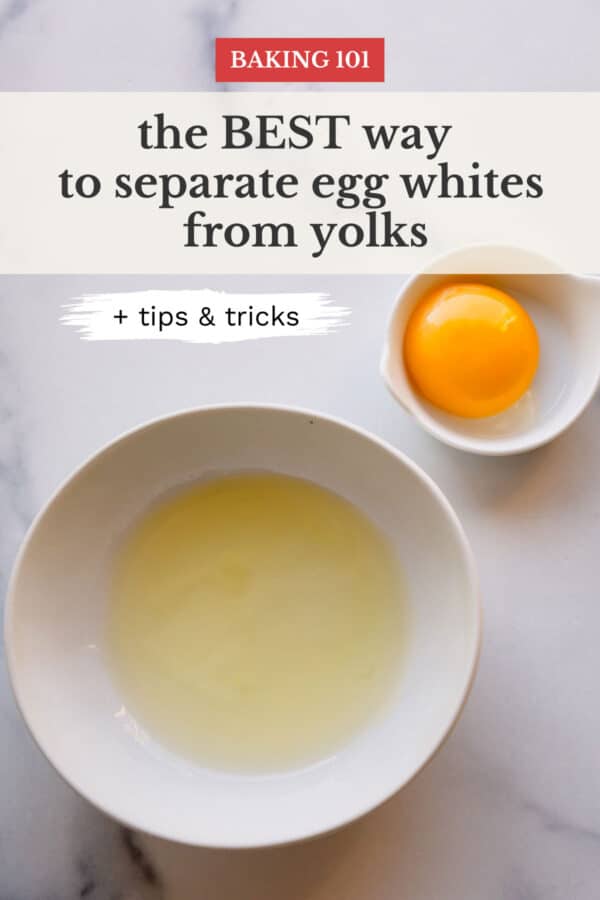Learn how to dehydrate peaches and preserve summer’s sweetness with this easy-to-follow guide. Dehydrating peaches is a simple, two-part process that is much easier than canning!
Why you’ll love this recipe:
Savor the flavor of peach season long after summer has passed with dehydrated peaches. They satisfy your sweet tooth, have a long shelf life, and are great for snacking!
- Delicious – Dehydrating intensifies the natural sweetness in fresh produce, making dehydrated peaches even more flavorful than fresh varieties!
- Long-lasting – Dried fruit will stay fresh in your pantry for months.
- Easy to make – Making dehydrated peaches requires only one ingredient, and the dehydrator does most of the work for you!
While I love to use fresh, juicy peaches to make cobblers, ice cream, and cake, dehydrated peaches are perfect for adding to granola, oatmeal, and homemade trail mix!
Best Peaches to Dehydrate:
You’ll want to choose a variety of peaches that are known for their sweet and flavorful taste, as well as their firm texture. Some of the best types of peaches for dehydration include:
- Freestone Peaches: These peaches have flesh that easily separates from the pit, making them ideal for slicing and dehydrating.
- Clingstone Peaches: While a bit harder to remove the pit from, clingstone peaches are also suitable for dehydrating due to their sweet and juicy flesh.
- Elberta Peaches: This classic peach variety is well-known for its excellent flavor and firm texture, making it a great choice for dehydrating.
- O’Henry Peaches: O’Henry peaches have a sweet, tangy flavor and firm flesh, making them perfect for the process of dehydrating.
- Donut Peaches (Saturn Peaches): These unique peaches have a flattened shape and are great for dehydrating due to their sweet taste and low moisture content.
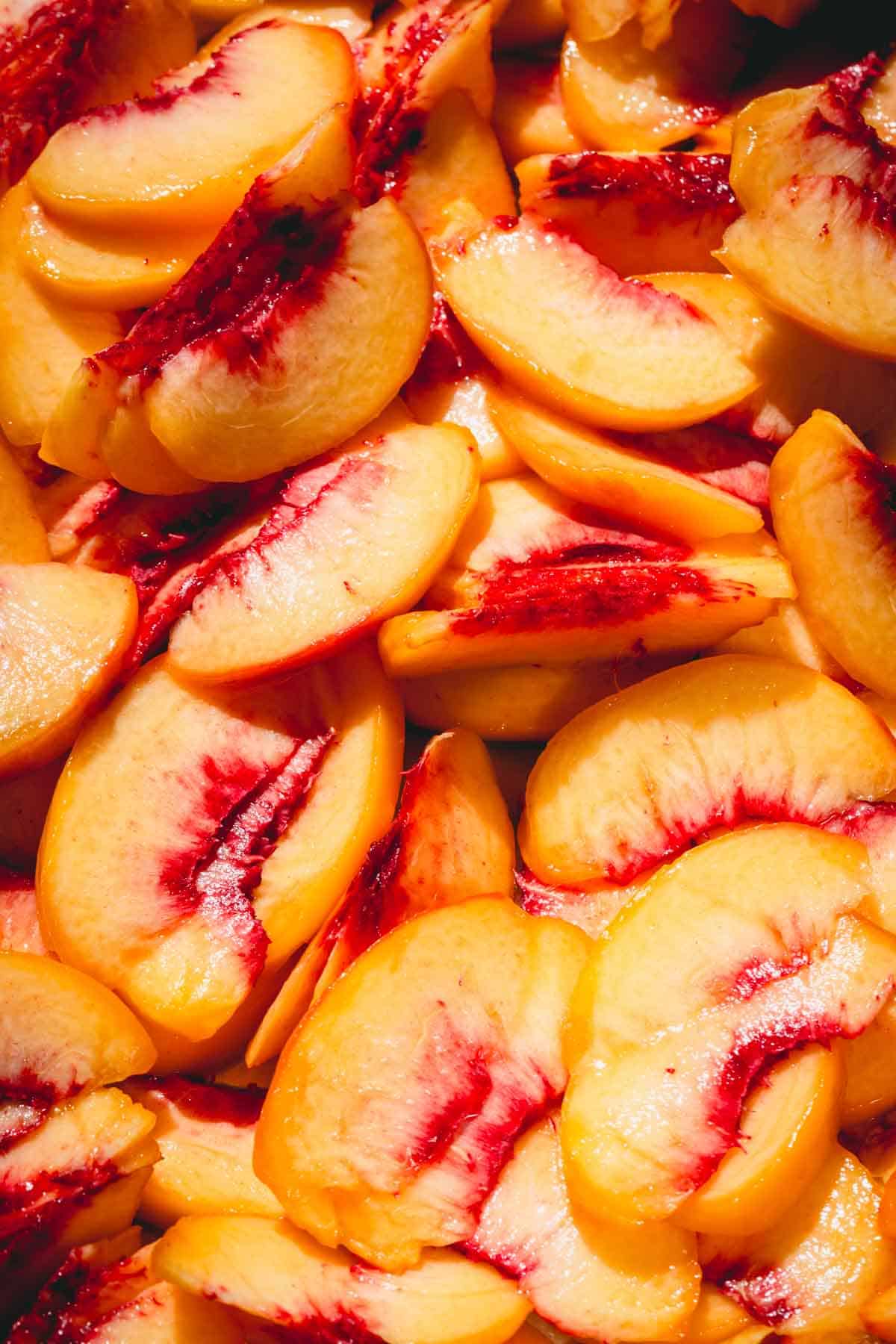
How to Dehydrate Peaches:
It’s a little time-consuming, but easy process! After the skin is removed, the peaches are sliced and left to dry for the day in a dehydrator.
1. Peel the peaches
- Bring a large pot of water to a boil. Then, reduce the heat to a simmer.
- Cut a large (but shallow) X into the bottom of each peach using a sharp paring knife.
- Carefully submerge the peaches into the simmering water, and blanch for about 30 seconds.
- Transfer the peaches to a large bowl of ice water using a slotted spoon.
- Once cool enough to handle, gently pull the skin away from the peach, starting from the X.
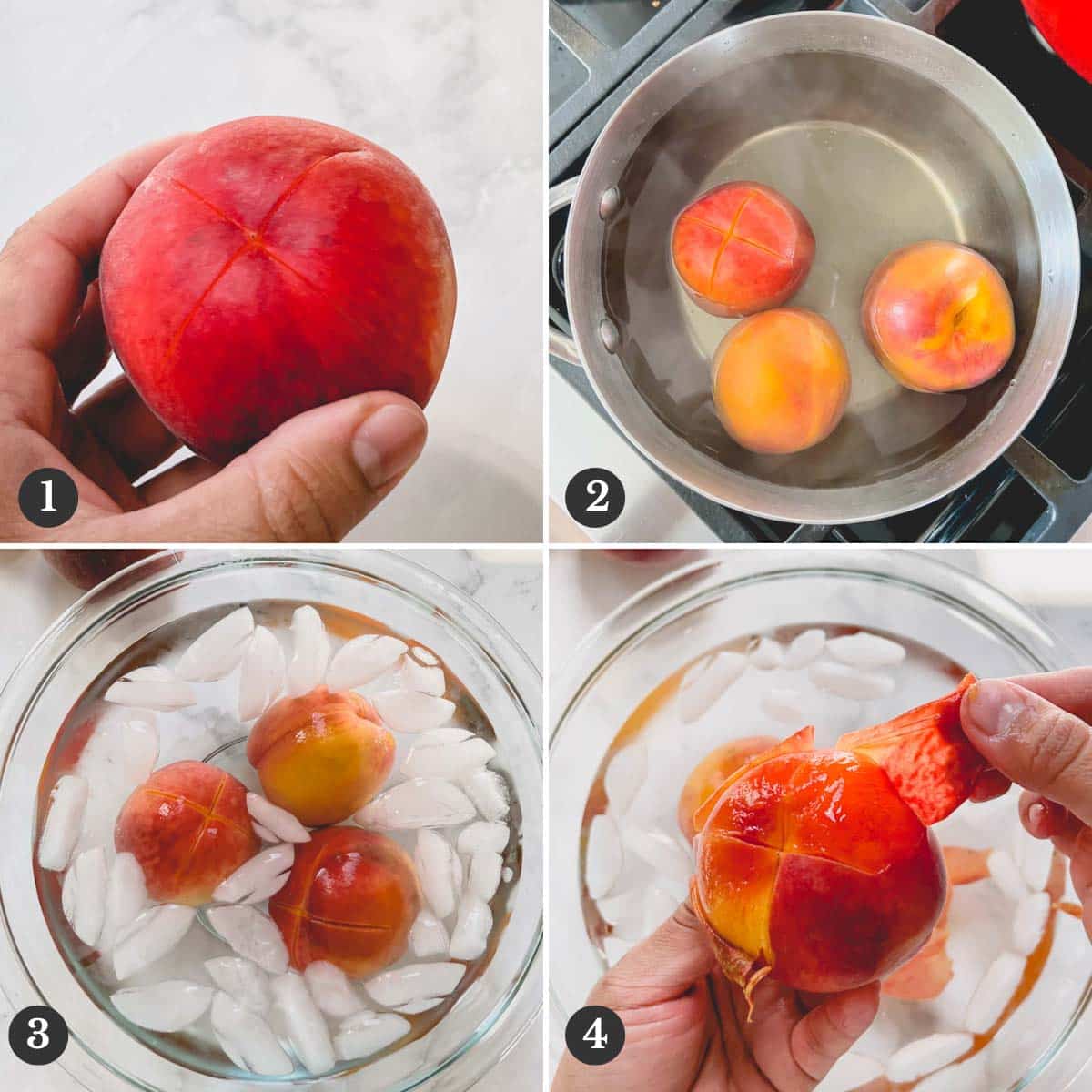
Avoid mushy peaches!
Only blanch the peaches long enough to loosen the peel. Otherwise, they’ll become too soft and won’t have the slightly firm, chewy texture we want.
2. Slice the peaches
- Use a paring knife to cut the peaches in half. Remove the pit, and cut each half into about ¼ -inch thick slices. Try to make the slices uniform, so they dry at the same rate.
- Arrange the peach slices in a single layer on a dehydrator tray lined with Teflon sheets.
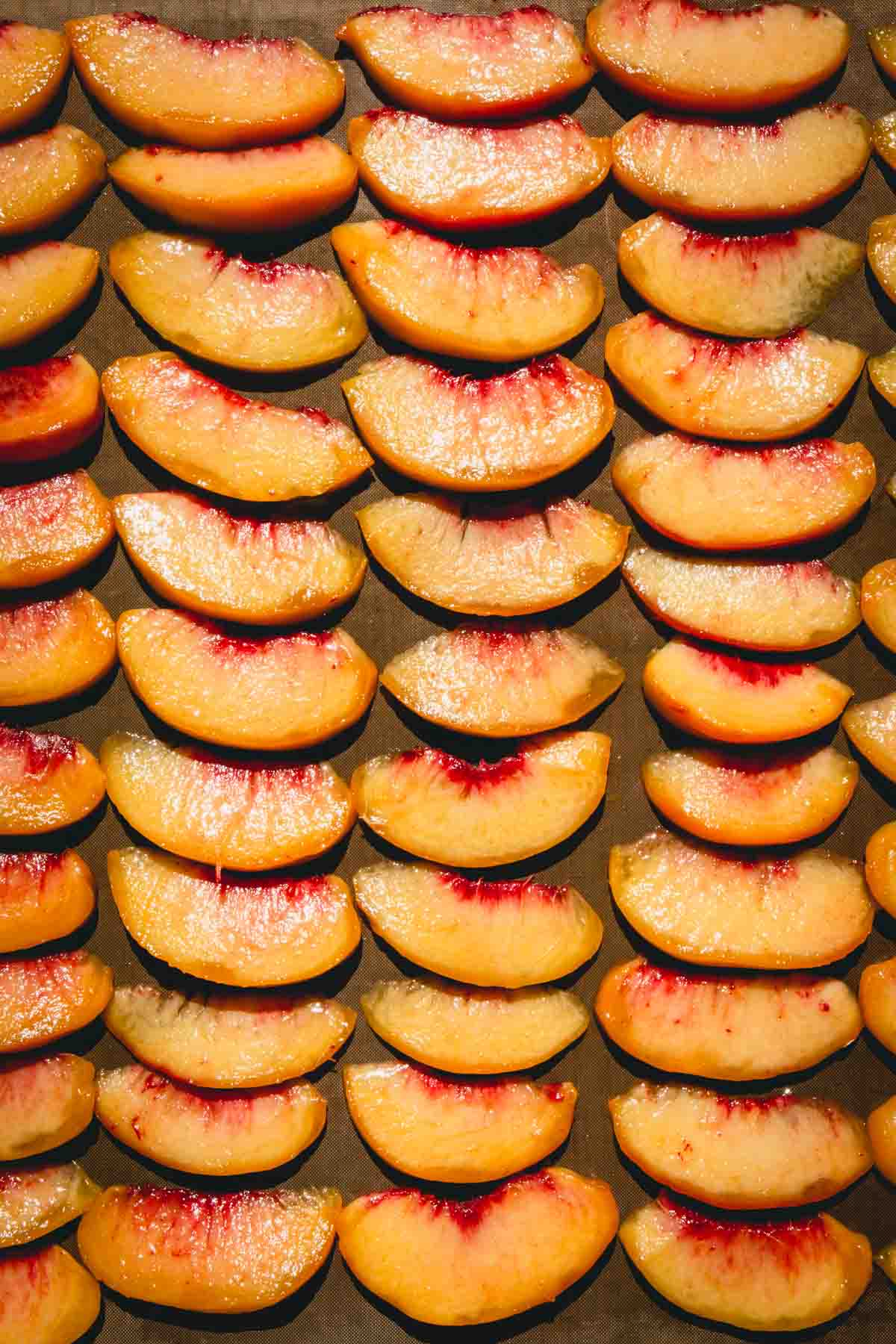
3. Dehydrate the peaches
- Set the dehydrator temperature to 135°F (60°C), and let the peaches dry for about 14-18 hours, or until all the pieces are fully dry.
- Let the peach slices cool completely. Store cooled slices in an airtight container.
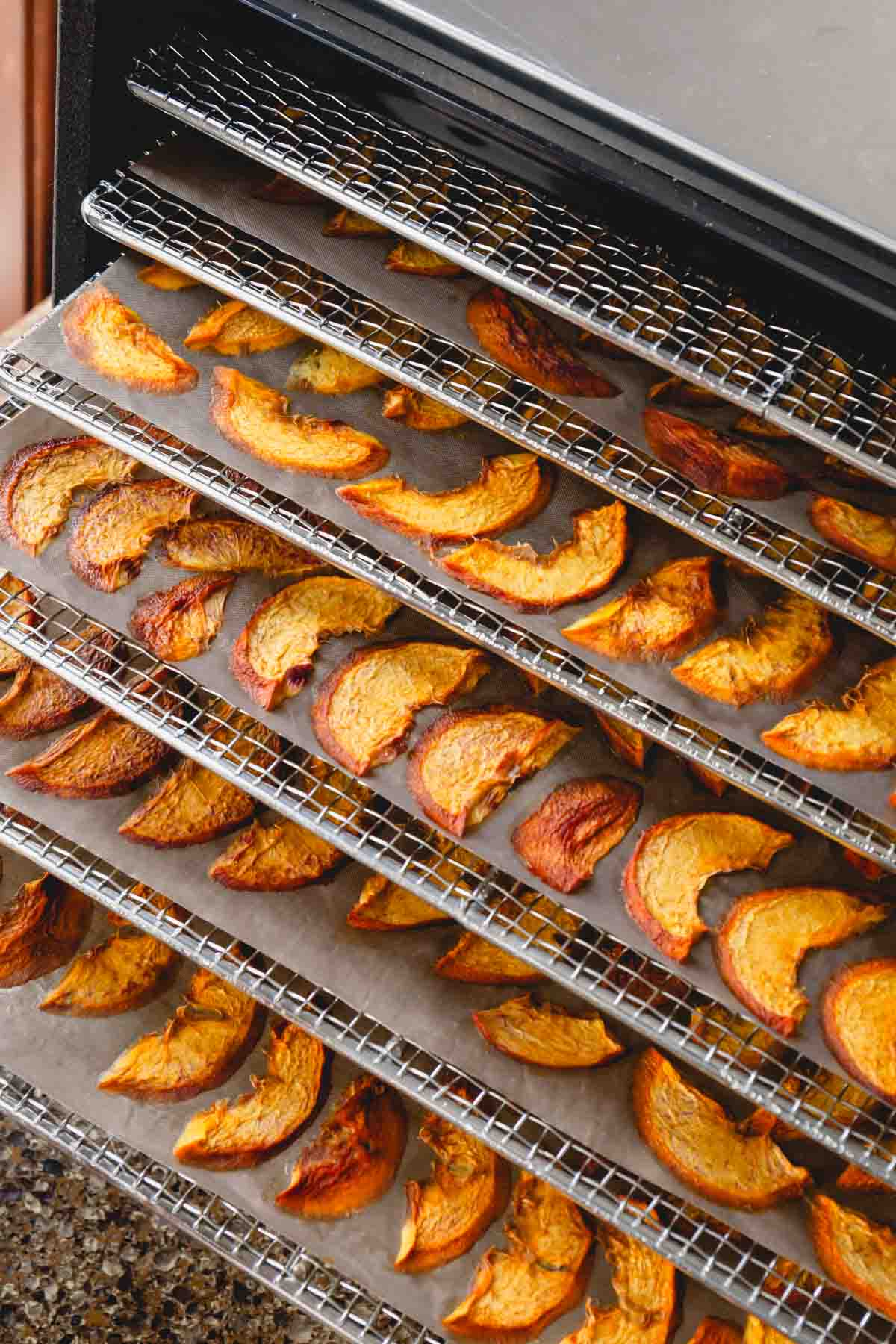
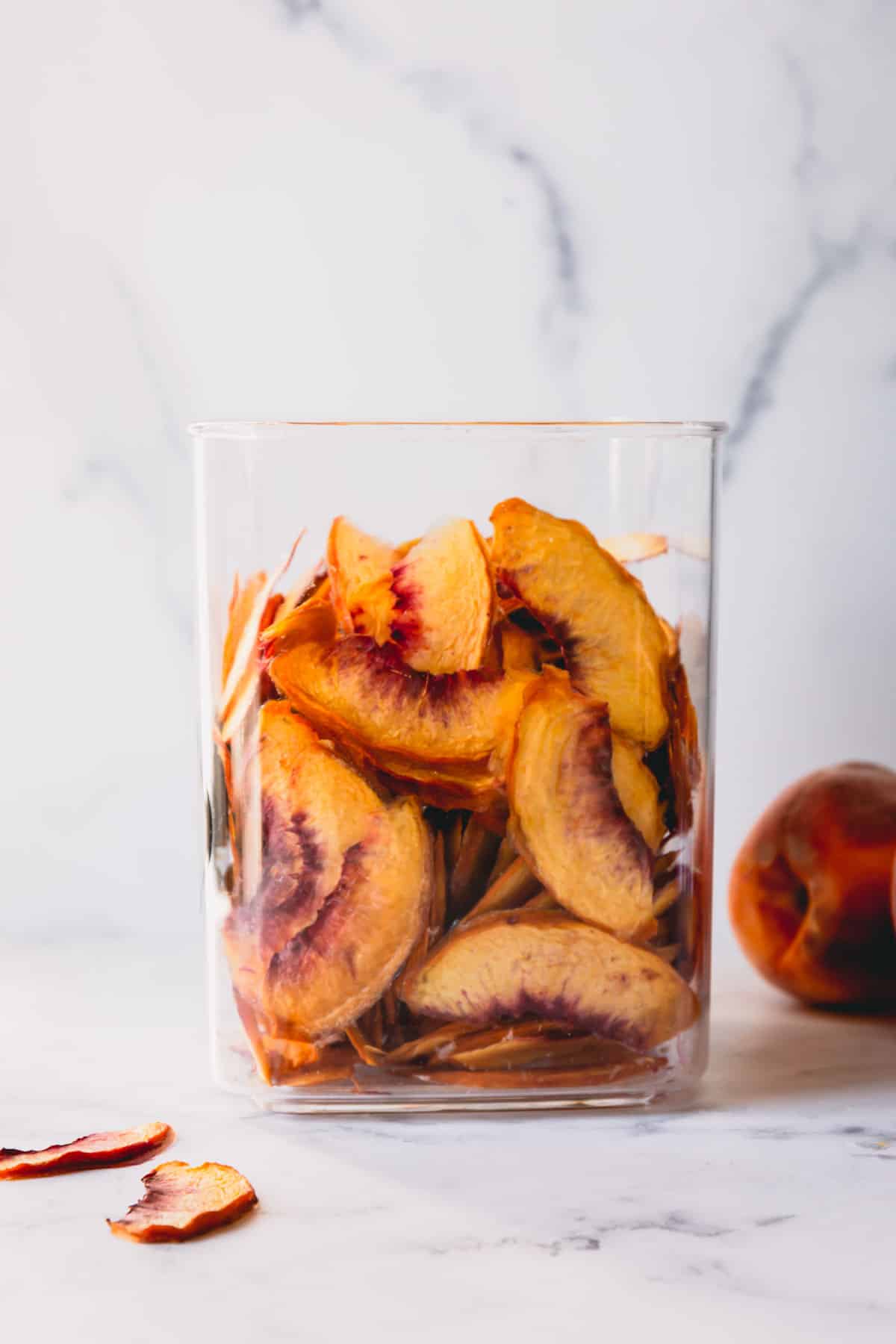
My Favorite Dehydrator
Tips for Success:
- Use a high-quality dehydrator. I recommend using a 9-tray Excalibur Dehydrator. I’ve been using mine for the last 10+ years and absolutely love it!
- Choose the right peaches. For the best dehydrating results, select ripe, firm peaches. They should be fragrant and have vibrant colors, with no soft spots or signs of mold.
- Line the dehydrator racks with Teflon sheets so the fruit doesn’t stick to the wires, making it hard to remove.
- Learn more about fresh peaches. Peach 101 will teach you everything you need to know about peeling, storing, and selecting fresh peaches!
Storing Tips:
- Make sure the dried peaches are thoroughly cooled down before storing them. If the peaches are still warm, moisture will form, leading to mold and bacteria growth.
- It’s best to store dehydrated fruit in airtight containers. Mason jars are a great option!
- Dried peaches should be stored in a cool, dark place to extend their shelf life. If you live in a hot, humid climate, you may want to keep your dehydrated peaches in the refrigerator.
- Vacuum seal dried fruit to extend the shelf-life for years to come.
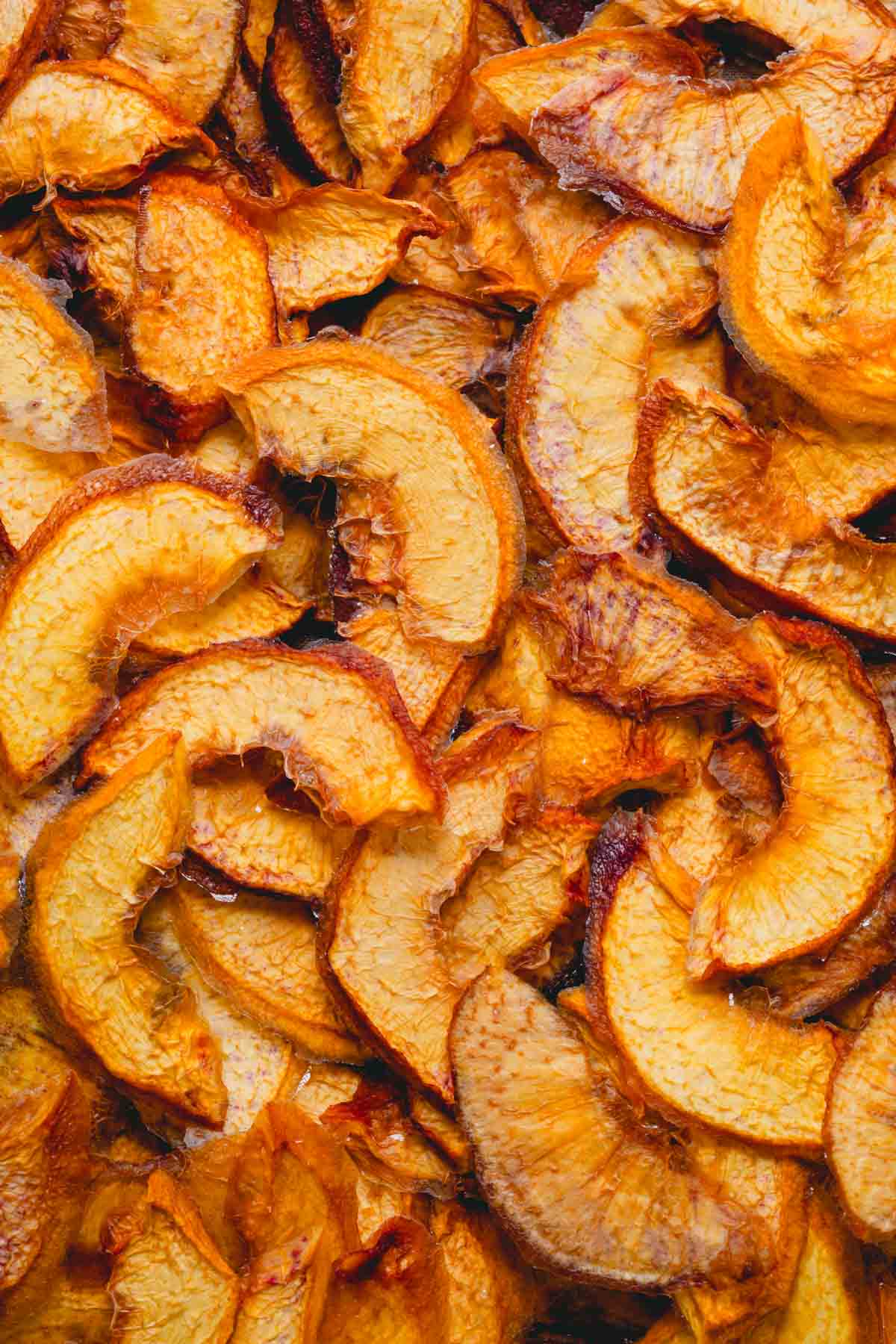
FAQs:
Dehydrated peaches are delicious in trail mix, granola bars, baked goods, and salads. They can also be rehydrated and added to smoothies and sauces.
To rehydrate, simply soak the dried peaches in warm water until soft. Rehydrating may take up to an hour.
Dried peaches contain vitamins, minerals, and fiber. They’re a nutritious, whole-food snack. However, keep in mind that dried fruit can be high in sugar.
Dried peaches taste similar to fresh peaches but are much sweeter with a crist and chewy texture.
More Peach Recipes:
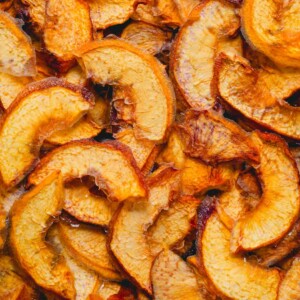
How to Dehydrate Peaches
Ingredients
- Fresh peaches Note 1
Equipment
- 1-10 teflon sheets
Instructions
To peel the peaches:
- Bring a large pot of water to a boil, then reduce the heat to a simmer.
- Using a sharp paring knife, cut a large but shallow x into the bottom of each peach.Fresh peaches
- Carefully submerge the peaches into the simmering water and blanch for 30 seconds or so.
- Use a slotted spoon or a spider skimmer to transfer the peaches to a large bowl of ice water. (TIP: Don’t blanch the peaches too long, or they will get mushy. They need just enough to loosen the peel.)
- Once cool enough to handle, gently pull the skin away from the peach starting from the X.
To dehydrate the peaches:
- Using a paring knife, cut the peaches in half. Remove the pit and cut each half into thin slices, about ¼ -inch thick. Try to make the slices as uniform as you can so they dry at the same rate.
- Arrange the peach slices in a single layer on a dehydrator tray, lined with Teflon sheets.
- Set the dehydrator temperature to 135°F (60°C) and let the peaches dry for about 12-16 hours, or until all the pieces are fully dry.
- Let the peach slices cool completely and then store them in an airtight container.
Tips & Notes
– Freestone Peaches: These peaches have flesh that easily separates from the pit, making them ideal for slicing and dehydrating.
– Clingstone Peaches: While a bit harder to remove the pit from, clingstone peaches are also suitable for dehydrating due to their sweet and juicy flesh.
– Elberta Peaches: This classic peach variety is well-known for its excellent flavor and firm texture, making it a great choice for dehydrating.
– O’Henry Peaches: O’Henry peaches have a sweet and tangy flavor, and their firm flesh makes them perfect for dehydrating.
– Donut Peaches (Saturn Peaches): These unique peaches have a flattened shape and are great for dehydrating due to their sweet taste and low moisture content. Storing Tips:
– Allow the dehydrated peaches to cool completely.
– Transfer the peaches to an airtight container.
– Store them in a cool, dry place for up to 1 year.
– Vacuum seal the peaches for longer-lasting storage.
